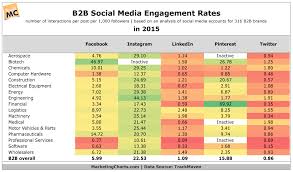Nearly a year after COVID vaccines became freely available in the U.S., one fourth of American adults remain unvaccinated, and a picture of the economic cost of vaccine hesitancy is emerging. It points to financial risk for individuals, companies and publicly funded programs.
Vaccine hesitancy likely already accounts for tens of billions of dollars in preventable U.S. hospitalization costs and up to hundreds of thousands of preventable deaths, say public health experts.
For individuals forgoing vaccination, the risks can include layoffs and ineligibility to collect unemployment, higher insurance premiums, growing out-of-pocket medical costs or loss of academic scholarships.
For employers, vaccine hesitancy can contribute to short-staffed workplaces. For taxpayers, it could mean a financial drain on programs such as Medicare, which provides health care for seniors.
Some employers are looking to pass along a risk premium to unvaccinated workers, not unlike how smokers can be required to pay higher health premiums. One airline said it will charge unvaccinated workers $200 extra a month in insurance.
“When the vaccines emerged it seemed like everyone wanted one and the big question was how long it would take to meet the demand,” said Kosali Simon, a professor of health economics at Indiana University. “It didn’t occur to me that, a year later, we’d be studying the cost of people not wanting the vaccines.”
Alicia Royce, a 38-year-old special education teacher in Coachella, California, opted out of getting the COVID vaccine or having her two vaccine-eligible children get it. Royce’s parents got the shots, but she has been concerned by issues including reports of adverse reactions.
The decision puts Royce in a delicate spot. Her school, like others in California, began a vaccine mandate for staff last year. For now, Royce has a religious exemption and gets tested for COVID twice a week before entering the classroom. The situation has prompted her family to plan a move to Alabama, where schools have not imposed mandates, after the school year.
“I’ll get paid less,” said Royce, who expects to take a $40,000-a-year pay cut. “But I’m moving for my own personal freedom to choose.”
Preventable care, billions in costs
As the pandemic enters its third year, the number of U.S. patients hospitalized with COVID is near a 17-month low. Most Americans are vaccinated, and the country is regaining a semblance of normalcy, even as authorities predict a coming uptick in infections from the BA.2 sub-variant.
Yet as millions return to offices, public transportation and other social settings, Centers for Disease Control and Prevention figures show nearly 25% of U.S. adults haven’t been fully vaccinated, and the latest data suggests many holdouts won’t be easily swayed: The number of people seeking a first COVID vaccine in the U.S. has fallen to 14-month lows.
Vaccines have proven to be a powerful tool against the virus. CDC figures from 2021’s Delta wave found that unvaccinated Americans had four times greater risk of being infected, and nearly 13 times higher risk of death from COVID. The disparities were even greater for those who received booster shots, who were 53 times less likely to die from COVID. Less than half of the country’s vaccinated population has so far received a booster.
In a December study, the nonprofit Kaiser Family Foundation, which tracks U.S. health policy and outcomes, estimated that between June and November of 2021, unvaccinated American adults accounted for $13.8 billion in “preventable” COVID hospitalization costs nationwide.
Kaiser estimated that over that six-month period, which included the Delta wave, vaccinations could have averted 59% of COVID hospitalizations among U.S. adults. Kaiser tallied 690,000 vaccine-preventable hospitalizations, at an average cost of $20,000. And it estimated vaccinations could have prevented 163,000 U.S. deaths over the same period.
If vaccine hesitancy accounted for half of the more than 1 million new U.S. COVID hospitalizations since December, the added cost of preventable hospital stays could amount to another $10 billion, Reuters found.
One thing is clear: As U.S. insurance providers and hospital networks reckon with vaccine hesitancy, it’s likely that patients hospitalized for COVID will end up shouldering a bigger portion of the bill.
“These hospitalizations are not only devastating for patients and their families but could also put patients on the hook for thousands of dollars,” Krutika Amin, a Kaiser associate director and one of the December study’s co-authors, told Reuters. Unlike earlier in the pandemic, Amin said, most private health insurers have stopped waiving cost-sharing or deductibles for COVID patients who end up hospitalized.
For some insurance plans, the cost to a hospitalized COVID patient can exceed $8,000 just for “in-network” services, she added. The expenses could balloon for the uninsured and those turning to out-of-network care.
Now that Americans have the choice to protect themselves with vaccines, insurance companies are requiring patients to bear more of these costs, but “many people do not have enough money to pay,” Amin said.
More recent data – covering the Omicron wave – underscores the risk for the unvaccinated. During January in New York State, unvaccinated adults were more than 13 times as likely to be hospitalized with COVID than fully vaccinated adults, state health department figues show.
Political flashpoint
The U.S. has spent billions to get vaccine shots into arms, including more than $19.3 billion to help develop vaccines, federal reports show.
Still, the United States has one of the largest COVID vaccine holdout rates among highly developed countries, as some question the need for getting the shots or bristle at government or workplace mandates.
“The subset of the population that is really anti-COVID vaccine, ready to quit jobs or test in order to go to work, is now pretty hardened,” said Julie Downs, a social psychology professor at Carnegie Mellon University.
COVID vaccines have become a political flashpoint, and vaccination rates vary widely by region: In Vermont, public health data shows 84% of those 18 and up are fully vaccinated, while the rate is just above 60% in Alabama.
Nearly 76% of people in the United States have had at least one dose of a COVID vaccine, CDC data shows, but the fully vaccinated figure – across all age-groups – stands at 64%. The Food and Drug Administration hasn’t yet approved a COVID vaccine for children under 5.
Perhaps the biggest financial risk vaccine holdouts have faced is getting laid off from their jobs, said Kaiser’s Amin.
New York City, which requires city workers to be vaccinated, fired more than 1,400 of them last month who hadn’t received a vaccine shot by the city’s deadline, while around 9,000 other workers remained in the process of seeking exemptions to the requirement, city figures show. The vast majority of the city’s 370,000-person workforce is vaccinated.
A Kaiser Family Foundation nationwide survey in October found that about a quarter of workers said their employer required proof of vaccination. Only 1% of workers surveyed — and 5% of unvaccinated workers — reported having left a job due to a workplace vaccine mandate.
A tiny minority of healthcare workers across the country have been fired or placed on work leave because they chose to remain unvaccinated, but the dismissals still amount to thousands of layoffs, according to a report from Fierce Healthcare, which tracks the trend.
No-vax tax
Giant employers including J.P. Morgan and Bank of America have informed their U.S. employees they can expect to pay more – or receive fewer perks through company wellness programs – if they don’t provide proof of vaccination.
Other companies have extended an insurance premium surcharge for unvaccinated spouses or family members of employees if they want to be insured as a dependent under an employee’s health plan.
And after global life insurance providers were hit with a higher-than-expected $5.5 billion in claims during the first nine months of 2021, insurers will be looking to calibrate premiums more closely to COVID mortality risks going forward, Reuters reported.
Vaccination status and other health risks – such as obesity or smoking — are metrics life insurers can probe when customers seek coverage. Under the U.S. Affordable Care Act, individuals seeking health insurance can’t be denied for pre-existing conditions, including COVID, or charged more for not being vaccinated. But companies who cover some of employees’ health insurance costs can pass along higher costs to unvaccinated employees.
Delta Airlines said last year it would charge employees who didn’t vaccinate an extra $200 a month for health insurance. The airline said the extra charge reflected the higher risk of COVID hospitalization for those employees, and noted that employee hospitalizations for COVID had cost $50,000 each so far, on average.
University students also can face financial consequences for opting out. At least 500 U.S. colleges have vaccine mandates, some barring enrollment or in-person schooling for those who don’t comply, or requiring them to undergo frequent COVID testing.
Cait Corrigan said she enrolled in a master’s program in theology at Boston University this year and was offered an academic scholarship. Corrigan, who has led public-activism efforts against vaccine mandates, said she got a religious exemption to the school’s vaccine mandate, but the school required that she take regular nasal swab tests to attend. Corrigan said she declined to submit to nasal tests for “medical reasons.”
The university suspended her and withdrew funding, she said. “It was a big loss.” Boston University didn’t respond to a request for comment.
Now in New York, Corrigan says she is campaigning for a congressional seat as a Republican. Her platform: “medical freedom.”































